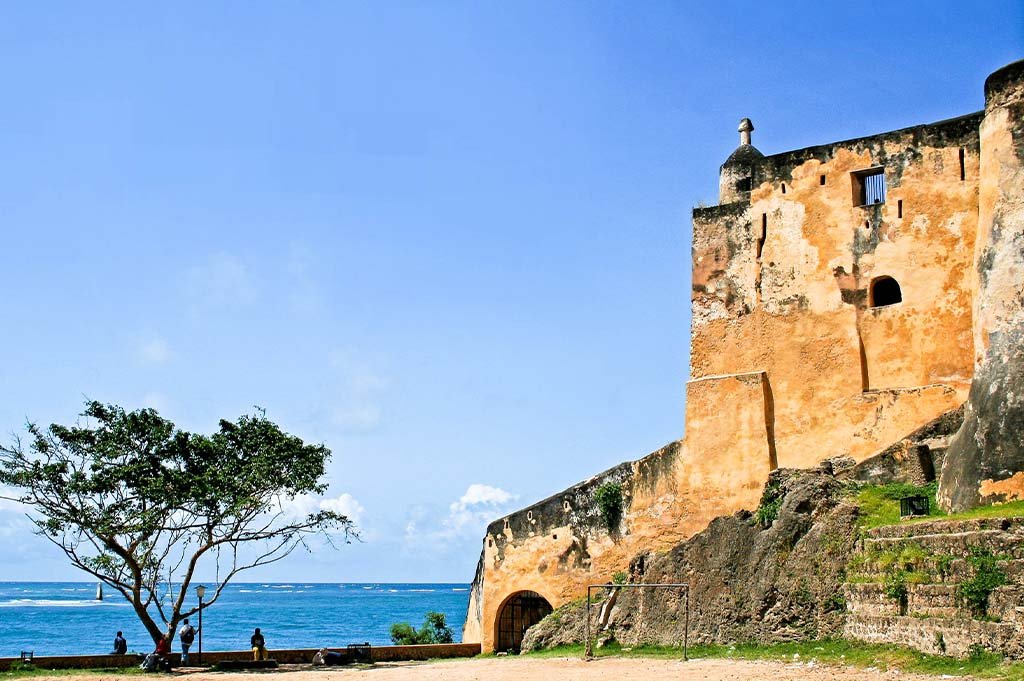Fort Jesus, located on the coast of Kenya in the bustling city of Mombasa, is one of the world’s finest and best-preserved examples of 16th-century Portuguese military architecture. Built between 1593 and 1596 under the direction of architect Giovanni Battista Cairati, this coastal fortress was constructed by the Portuguese to defend the strategic port of Mombasa from competing powers.

The architectural design of Fort Jesus is a remarkable representation of Renaissance ideals. Cairati’s vision for the fort was inspired by the notion that geometric harmony and perfect proportions are inherent to the human form, a belief widely held during the Renaissance. The layout, proportions, and symmetry in Fort Jesus reflect this vision, making it a unique architectural specimen in Africa. Its massive walls, five imposing bastions, and strategic positioning emphasize both aesthetic values and defensive capability, marking a milestone in the evolution of military fortifications.

Fort Jesus became the epicenter of a centuries-long struggle among African, Arab, Turkish, Persian, and European forces, each vying for control of the Indian Ocean trade routes. The fort’s structures bear physical witness to these diverse influences, making it a lasting testament to the historical and cultural exchanges that shaped East Africa.

Fort Jesus covers an area of 2.36 hectares, encompassing not only the main structure but also its moat and surrounding grounds. Its significance as a site of universal historical and cultural value has been recognized by UNESCO, which acknowledges Fort Jesus as a site that bears testament to Western civilization’s earliest success in establishing dominance over the Indian Ocean.




